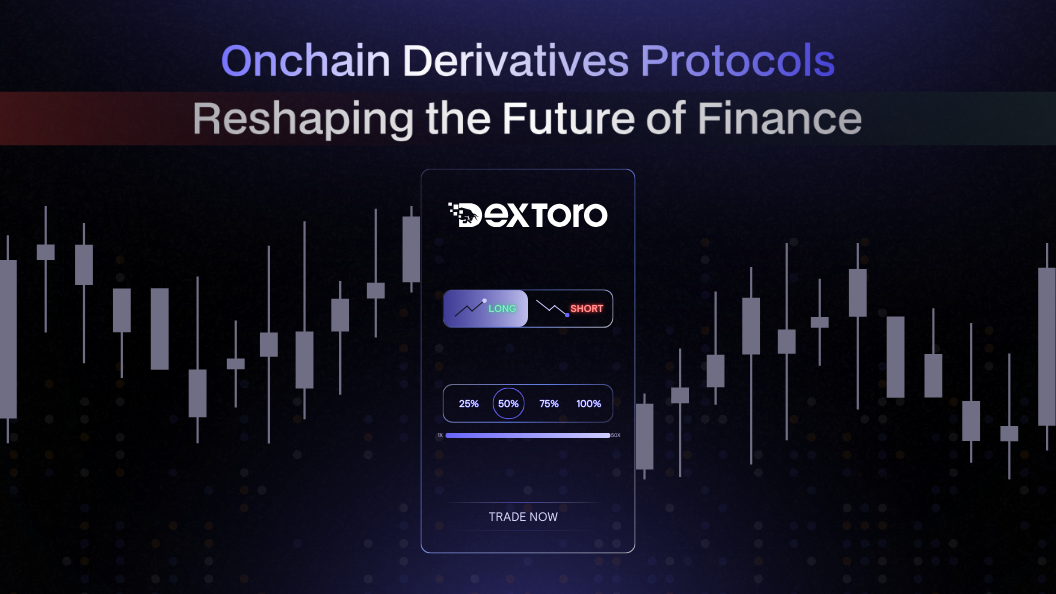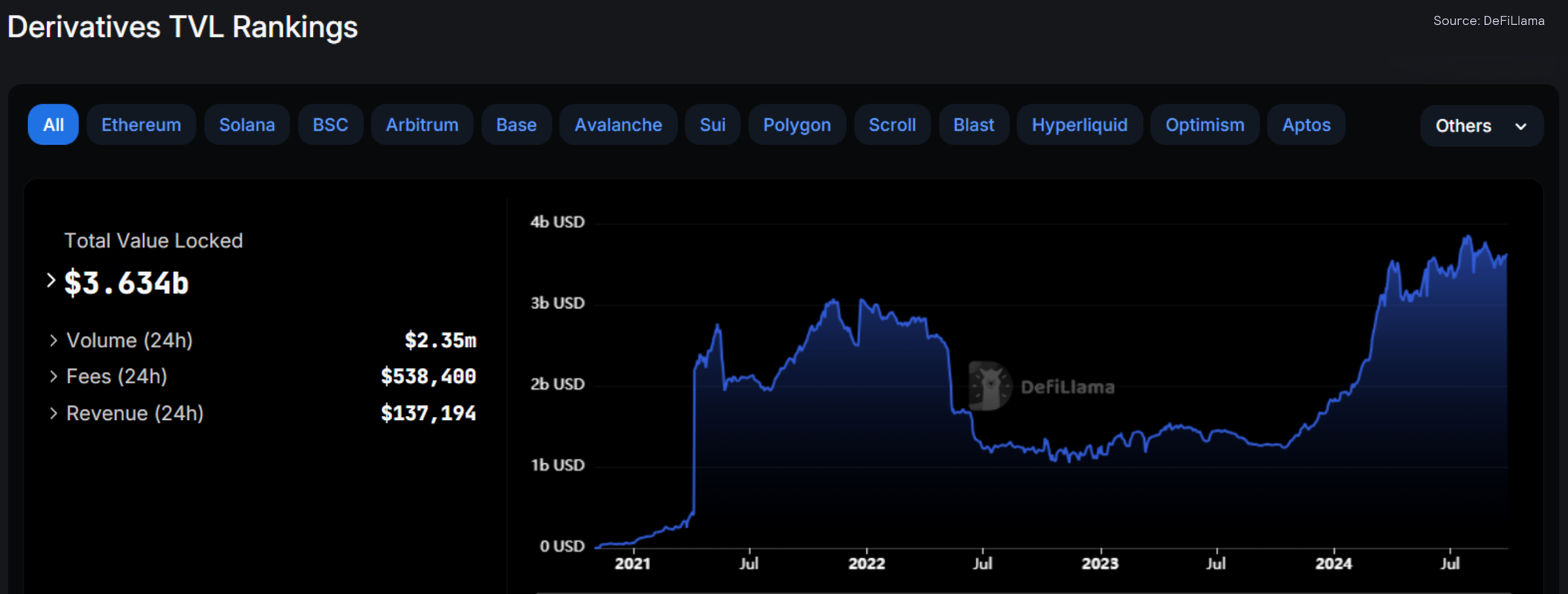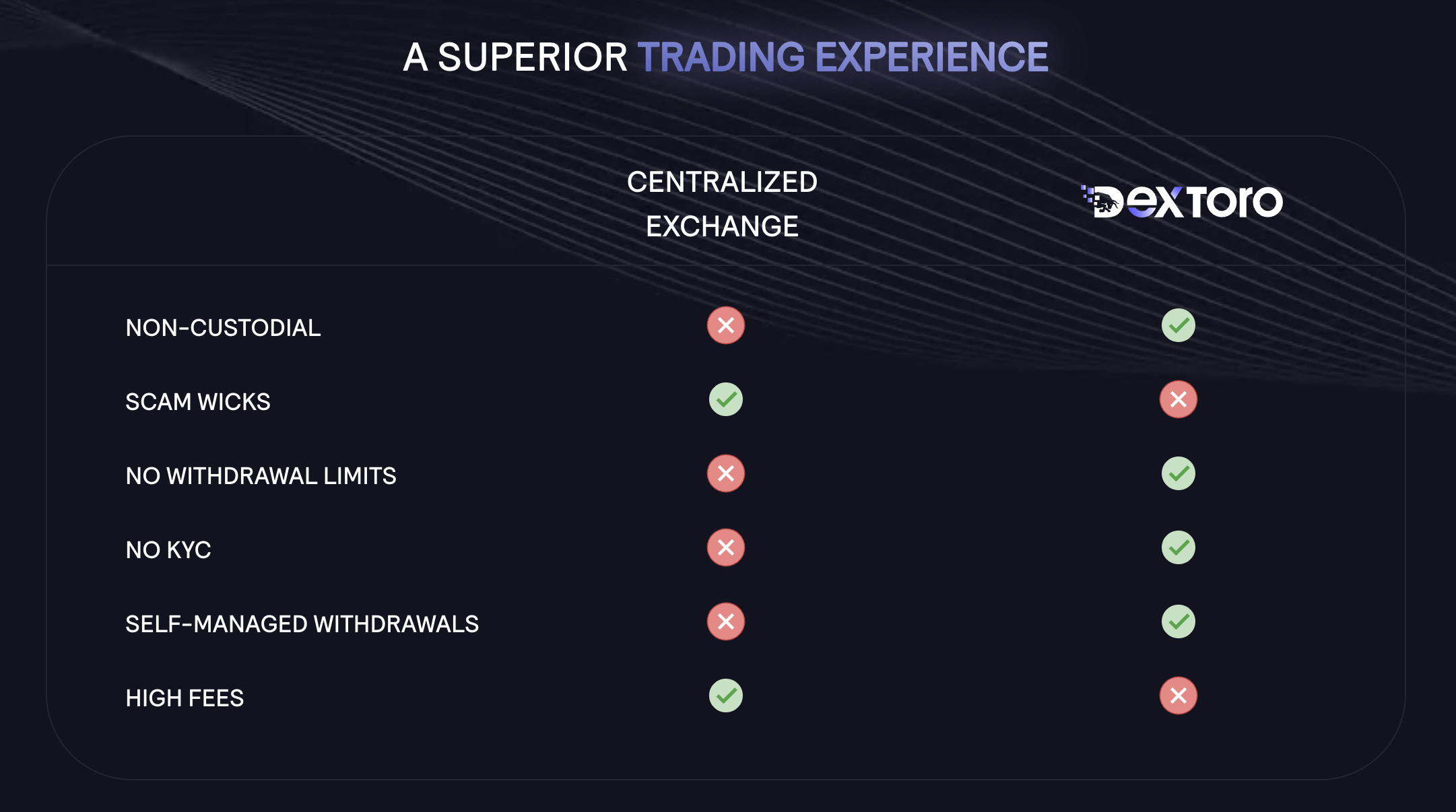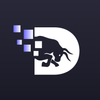Onchain Derivatives Protocols: Reshaping the Future of Finance

Decentralized finance (DeFi) leverages blockchain to create an open, global financial system free from traditional intermediaries and geographic limitations. The exponential growth of DeFi has led to a wide range of innovative financial products, such as decentralized lending and borrowing, stablecoins, and decentralized exchanges. This article explores one of DeFi's most promising innovations: onchain derivatives protocols. We'll examine their functionality, impact on the broader DeFi ecosystem, the top players in the market, and so much more. Let's dive in into
What Are Onchain Derivatives Protocols?
Derivatives are financial contracts whose value is derived from the performance of an underlying asset, index, or entity. Onchain derivatives exist and operate entirely on blockchain networks, with smart contracts automating and enforcing the terms of the agreement.
Onchain derivatives protocols are the platforms and systems that facilitate the creation, trading, and settlement of these derivatives in a decentralized manner. Each protocol has its unique features, mechanisms, and use cases. Some protocols focus on specific types of derivatives, while others offer a broader range of products.
The concept of derivatives can be traced back to ancient times. In his work "Politics," Aristotle recounted the story of Thales of Miletus, a philosopher who effectively executed what many consider the first recorded options trade.
Thales, confident in his prediction of a bountiful olive harvest, paid deposits to secure the use of olive presses during the harvest season. This move demonstrated the fundamental principle of derivatives: deriving value from the future performance of an underlying asset.
Fast forward to the present day, and we find ourselves at the cusp of a new financial revolution. The transition from traditional finance to DeFi derivatives marks a fundamental change in how these instruments are created, traded, and settled.

Key Features of Onchain Derivatives Protocols
- Decentralization: Onchain derivative protocols operate without central authorities, allowing permissionless access and reducing single points of failure.
- Transparency: All transactions and contract terms are recorded on the blockchain for unprecedented transparency.
- Automation: Smart contracts automatically execute the derivative agreement's terms to reduce the potential for human error and manipulation.
- Global Accessibility: These protocols are accessible to anyone with an internet connection to democratize sophisticated financial instruments.
- Reduced Counterparty Risk: Smart contracts hold and manage collateral to mitigate counterparty default risk in derivative transactions.
- Composability: Onchain derivatives easily integrate with other DeFi protocols to enable complex financial strategies and foster innovative product development.
Onchain Derivatives Market Size and Potential Growth
The onchain derivatives market has seen significant growth in recent years. As of Q4 2024, the total value locked (TVL) in decentralized finance (DeFi) is $82 billion. This figure represents the total amount of assets deposited in DeFi protocols and is a key indicator of the sector's size and health.
Onchain derivatives trading has experienced robust growth. Average monthly trading volumes have increased from $57.0 billion last year to $234.2 billion this year — representing a 311% year-over-year increase.
According to the Bank for International Settlements, the global over-the-counter derivatives market had a notional value of $715 trillion as of June 2023. Some estimates even place the total market size at $1 quadrillion when accounting for all derivatives.


Types of Onchain Derivatives
The world of onchain derivatives is diverse, offering various financial instruments to suit various trading and risk management strategies. Here are some of the most prominent types:
Synthetic Assets
Synthetic assets, or "synths," are tokenized derivatives that track the value of underlying assets without requiring ownership of those assets. These digital tokens can represent various financial instruments, including stocks, commodities, cryptocurrencies, or even market indices within the DeFi ecosystem.
The power of synths lies in their accessibility. They allow users to gain exposure to a wide range of assets without directly owning them, opening up global markets that might otherwise be out of reach. Investors can even own fractions of high-value assets, further democratizing financial markets.
Unlike traditional markets, synths can be traded 24/7, adding a new level of flexibility to investing. Smart contracts automate all transactions, reducing the need for intermediaries and aligning with DeFi's goal of a more open financial system.
Options
Options are contracts that give the holder the right, but not the obligation, to buy (call option) or sell (put option) an underlying asset at a predetermined price before a specific expiration date. Onchain options protocols automate the creation, trading, and settlement of these contracts.
A key feature of onchain options is their flexibility. Many protocols allow users to create custom options with specific strike prices, expiration dates, and underlying assets. This customization extends beyond what's typically available in traditional markets, opening up new strategies for traders.
The true power of onchain options lies in their composability within the DeFi ecosystem. They can be easily integrated with other protocols, enabling complex, multi-step strategies that were previously difficult or impossible to execute. For example, options can be used as collateral in lending protocols or combined with yield farming strategies.
Perpetual Contracts
Perpetual contracts, commonly known as "perps," are a type of futures contract without an expiration date. They've gained significant popularity in the crypto derivatives market due to their simplicity and the ability to hold positions indefinitely.
The key to perpetual contracts is their funding rate mechanism, which keeps the contract price closely aligned with the underlying asset's spot price. This mechanism involves periodic payments between long and short-position holders.
Perpetual contracts typically offer leveraged trading, allowing users to open larger positions with less capital. Traders frequently use perpetual contracts for hedging and speculative purposes, particularly when looking to profit from short-term price movements.
Risk Tokenization
An innovative development in the DeFi space is the tokenization of risk itself. Risk tokenization allows users to buy or sell exposure to specific risk factors, enabling more granular risk management strategies and creating new opportunities for traders and investors.
Various types of risk can be tokenized. For instance, volatility tokens represent asset price fluctuations, yield tokens capture interest rate risk in lending protocols, while correlation tokens reflect relationships between different assets.
Coverage/Insurance Products
As the DeFi ecosystem has grown, so has the need for protection against smart contract failures, hacks, and other DeFi-specific risks. Coverage and insurance products have emerged to fill this crucial need by creating a pool of funds that can be used to pay out claims in the event of covered incidents.
DeFi insurance products often allow users to choose which protocols or types of risks they want to insure against. Many of these protocols use token holder voting or other decentralized mechanisms to assess and approve claims, aligning with the space's decentralized ethos. Those providing coverage can earn yields by staking their assets in coverage pools, creating an incentive for participation.
Read Also: - The Importance of Decentralized Trading Platforms vs Centralized Exchanges in 2024
Top Onchain Derivatives Protocols in the Market
The DeFi space has seen the emergence of several innovative onchain derivatives protocols. Let's explore some of the leading platforms:
DexToro
DexToro is a comprehensive decentralized blockchain protocol that has evolved from a Peer-to-Contract DEX to offer a suite of products for permissionless on-chain derivatives trading across EVM chains.
Key Features:
- On-chain self-custodial derivatives exchange powered by Ethereum smart contracts
- dUSD Stablecoin: Decentralized, collateral-backed cryptocurrency soft-pegged to the US Dollar (upcoming)
- Liquidity for permissionless derivatives like perpetual futures, options, parimutuel markets (upcoming)
- Smart Wallet: On-chain margin engine for derivatives trading
- DTORO Token for revenue sharing and governance
- Self-hosted crypto wallet for managing digital assets (upcoming)
- Enterprise solutions for liquidity provisioning and white-label products (upcoming)
Use Cases:
- Trading various derivative products on-chain (cryptocurrencies, forex, stocks)
- Providing and accessing liquidity for decentralized derivatives markets
- Participating in protocol governance through DTORO token
- Institutional clients leveraging DexToro's infrastructure through Enterprise solutions
Pros:
- Comprehensive suite of derivative products and tools
- Self-custodial and decentralized approach enhancing security and transparency
- Cross-chain compatibility (EVM chains) for wider accessibility
- Revenue sharing and governance opportunities for DTORO token holders
- Potential for reduced slippage and fees compared to existing DEXs
Cons:
- Several key features (like Liquidity, dUSD, and Enterprise solutions) are still upcoming
- Relatively new protocol (founded in June 2023) compared to some established competitors

Synthetix
Synthetix is an Ethereum-based protocol for issuing and trading synthetic assets called Synths.
Key Features:
- Wide range of Synths tracking various assets
- Over-collateralized debt pool model
- Integration with other DeFi protocols
Use Cases:
- Gaining exposure to traditional assets within DeFi
- Forex trading without leaving the crypto ecosystem
- Hedging against crypto volatility
Pros:
- A broad range of synthetic assets
- No slippage when trading between Synths
- High composability with other DeFi protocols
Cons:
- Complex tokenomics model
- Reliance on oracles for price feeds
Barnbridge
Barnbridge is a risk tokenizing protocol designed to create derivatives for hedging yield sensitivity and market price risk.
Key Features:
- Structured Market Adjusted Risk Tranches (SMART)
- Tokenized risk tranches
Use Cases:
- Customizing risk exposure in yield farming
- Creating fixed-income DeFi opportunities
Pros:
- Unique approach to risk management in DeFi
- Attracts more risk-averse investors to the space
Cons:
- Complex product structure
- Relatively new and untested in various market conditions
Ribbon Finance
Ribbon Finance offers structured products in DeFi, bundling multiple derivative products to meet specific risk-return goals.
Key Features:
- Four main product categories: volatility, yield enhancement, principal protection, and accumulation
- Automated options strategies
Use Cases:
- Enhancing yield on crypto holdings
- Implementing sophisticated trading strategies with ease
Pros:
- Makes complex derivatives strategies accessible to retail users
- Potential for attractive risk-adjusted returns
Cons:
- Strategies may underperform in certain market conditions
- Underlying mechanisms can be difficult for average users to understand
dYdX
Overview: While primarily known for decentralized margin trading, dYdX also offers a synthetic assets feature that allows users to gain exposure to various assets through perpetual contracts.
Key Features:
- Perpetual contracts for synthetic assets like cryptocurrencies and commodities.
- High liquidity and leverage options.
- Uses Layer 2 scaling on Ethereum for lower fees and faster transactions.
Pros:
- Excellent for users looking to trade synthetic assets with leverage.
- Low transaction costs due to Layer 2 scaling.
Cons:
- More geared towards experienced traders with an interest in derivatives and margin trading.
- Limited variety of assets compared to other synth platforms.
Mirror Protocol
Overview: Built on the Terra blockchain, Mirror Protocol enables the minting of synthetic assets called "mAssets," which track real-world assets like stocks and commodities.
Key Features:
- mAssets can be traded 24/7.
- Community governance decides which assets to track.
- Mirror uses a decentralized oracle for accurate price data.
Pros:
- Easy access to synthetic U.S. stocks and other assets.
- Strong integration with Terra's ecosystem, especially its stablecoin UST.
Cons:
- Focuses mostly on U.S. stocks, offering fewer asset varieties.
- Relies on the Terra blockchain, which may limit accessibility for users outside the Terra ecosystem.
These protocols represent the cutting edge onchain derivatives, each bringing unique features and opportunities to the DeFi ecosystem. As the space continues to evolve, we can expect to see further innovations and refinements in these platforms, as well as the emergence of new protocols addressing specific market needs.
Advantages of Onchain Derivative Protocols

Onchain derivatives protocols offer several significant advantages over their traditional counterparts:
Decentralization and Transparency
Unlike centralized exchanges, onchain derivatives protocols operate without a central authority. All transactions, order books, and contract terms are recorded on the blockchain to reduce the risk of market manipulation and increase system trust.
Reduced Counterparty Risk
Smart contracts automatically manage collateral and execute trades to eliminate traditional counterparty risk. The blockchain acts as a trust less intermediary, ensuring that all parties fulfil their obligations without relying on the creditworthiness of individual counterparties.
Global Accessibility
Onchain derivatives protocols are accessible to anyone with an internet connection, regardless of geographical location or financial status. This democratizes access to sophisticated financial instruments previously available only to institutional investors or high-net-worth individuals.
Composability with Other DeFi Protocols
One of the most potent advantages of onchain derivative protocols is their ability to interact seamlessly with other DeFi protocols. This composability allows for the creation of complex financial products and strategies, fostering innovation in the space.
24/7 Markets
Unlike traditional financial markets that operate on set schedules, onchain derivatives markets are open 24/7. The round-the-clock availability enables real-time reactions to global events and offers unparalleled flexibility for traders across different time zones.
Programmability and Automation
Smart contracts enable the creation of highly customizable and automated derivatives products. Their programmable nature allows for complex logic and conditional executions, opening up new possibilities for financial engineering and risk management strategies.
Challenges of Using Onchain Derivative Protocols
While onchain derivatives offer numerous advantages, the protocols face challenges that limit widespread adoption. Some of these challenges include:
- Smart Contract Vulnerabilities: As with all DeFi protocols, onchain derivatives platforms are susceptible to smart contract vulnerabilities. A bug in the code could potentially lead to significant financial losses for users.
- Liquidity Concerns: Many onchain derivatives markets are still relatively new and may suffer from low liquidity. The limited depth in these markets can result in significant slippage and difficulties in executing large trades, particularly for more exotic derivatives.
- Regulatory Uncertainty: The regulatory landscape for DeFi and crypto derivatives is still evolving. Future regulations could potentially impact the operation of these protocols, especially those offering synthetic versions of traditional securities.
- Oracle Dependency: Most onchain derivatives rely on oracles to provide price feeds for the underlying assets. If these oracles are compromised or provide inaccurate data, it could lead to mispricing and potential exploitation of the protocols.
- Complexity: Onchain derivatives protocols often involve intricate mechanisms that may challenge average users' comprehension. The sophisticated nature of these instruments can lead to misuse, misinterpretation of risks, and unexpected losses for inexperienced traders.
Use Cases for Onchain Derivatives
Onchain derivatives cater to various user needs and market conditions. Here are the main use cases of onchain derivatives:
Hedging
Traders and investors use onchain derivatives to protect their existing positions against market volatility. The strategy proves particularly useful in the highly volatile crypto market. For example, a holder of many ETH might use ETH-based put options to protect against potential price drops.
If the price of ETH falls, the increased value of the put option offsets some of the losses on the ETH holdings. Now, investors can maintain their long-term positions while mitigating short-term risk.
Speculation
Derivatives offer opportunities for speculative trading, allowing users to take positions on future price movements of assets without actual ownership. The approach can be particularly effective in volatile crypto markets with significant price swings.
For instance, a trader believing that Bitcoin will rise in value can "long" a BTC-based perpetual contract. If the price increases, the trader can sell the contract at a profit, even if they don't own any Bitcoin.
Yield Enhancement
Some DeFi protocols employ options strategies to generate yield on underlying assets. The method appeals to investors looking to earn passive income on their crypto holdings. A common approach involves selling covered calls, where an investor holding an asset sells call options on that asset.
Should the asset's price remain below the strike price at expiration, the investor retains both the underlying asset and the premium received from selling the option, effectively boosting their overall yield. This strategy can be particularly lucrative in sideways or slightly bullish markets as it provides a steady income stream while allowing for some upside potential.
Risk Management
Advanced DeFi platforms offer sophisticated risk management tools, enabling users to fine-tune their exposure across a spectrum of risk profiles. These protocols empower risk-averse and risk-seeking investors to tailor their strategies precisely.
For instance, an investor might use these protocols to separate the interest rate risk from the underlying asset risk in a lending position. Such a granular approach to risk allows users to precisely tailor their exposure according to their risk appetite and market view.
Accessing Traditional Assets in DeFi
Synthetic assets in DeFi allow users to gain exposure to traditional financial assets like stocks or commodities without leaving the crypto ecosystem. The feature bridges the gap between traditional finance and DeFi.
For example, a user could gain exposure to the price movements of popular stocks or commodities through synthetic assets, all within their crypto wallet. The capability opens up a world of traditional finance to DeFi users, potentially increasing the total addressable market for DeFi significantly.
Leveraged Trading
Some onchain derivatives protocols enable traders to take leveraged positions, amplifying potential gains (and losses) based on market movements. For example, a trader might take a 10x leveraged long position on ETH, meaning a 1% increase in ETH price would result in a 10% gain on their position.
While leveraged trading amplifies potential profits, it also increases risk, as losses are similarly magnified. These products cater to more sophisticated traders and can lead to increased market liquidity and price discovery.
The diverse use cases demonstrate the flexibility and potential of onchain derivatives protocols in reshaping financial interactions within the DeFi ecosystem. As the space continues to evolve, more innovative applications of these powerful financial tools will likely emerge.
How to Choose the Right Onchain Derivatives Protocol
With the growing number of onchain derivatives protocols available, it's crucial for users to carefully consider their options before engaging with a platform. Here are some key factors to consider when choosing an onchain derivatives protocol:
- Liquidity: Look for high total value locked (TVL) and substantial trading volumes for better trade execution and pricing.
- Security: Prioritize protocols with thorough security audits and a proven track record in high-stress market conditions.
- User Experience: Seek platforms with intuitive interfaces, clear documentation, and responsive customer support.
- Fees: Compare trading fees, gas costs, and other expenses that might impact profitability.
- Supported Assets: Ensure the protocol offers the specific assets or markets you're interested in trading.
- Decentralization Level: Consider the trade-offs between fully decentralized and partially centralized platforms.
- Community and Development: Look for an active community and regular updates, indicating a healthy, evolving protocol.
- Interoperability: Higher integration with other DeFi platforms offers more opportunities for complex strategies.
Remember, the best choice depends on your individual trading goals and risk tolerance. Always conduct thorough research before engaging with any protocol.
The Future of Onchain Derivative Protocols
The future of onchain derivatives looks promising, with several trends and developments likely to shape the landscape. These can be broadly categorized into technological advancements, market evolution, and regulatory changes.
Technological Advancements
- Cross-Chain Compatibility: Cross-chain derivatives protocols will likely emerge to allow more diverse and liquid markets.
- Improved Oracle Solutions: Expect more robust and decentralized Oracle solutions that enhance the reliability of onchain derivatives.
- Layer 2 Scaling Solutions: Adopting Layer 2 scaling should address current high gas fees and network congestion issues, making onchain derivatives more accessible and cost-effective.
Market Evolution
- Increased Institutional Adoption: As infrastructure matures, increased institutional participation could bring significant liquidity and sophistication to the space.
- Novel Derivative Products: The programmable nature of smart contracts will likely lead to increasingly sophisticated and exotic derivative products.
- Integration with Traditional Finance: We may see greater integration between onchain derivatives and traditional financial systems, potentially through tokenized real-world assets and hybrid trading platforms.
- Enhanced Risk Management Tools: Expect more sophisticated risk management tools to emerge that seamlessly cater to both retail and institutional investors.
Regulatory Landscape
- Regulatory Developments: The regulatory landscape will continue evolving, potentially bringing more clarity and legitimacy to the onchain derivatives market while posing challenges for some existing models.
As these trends converge, onchain derivatives are set to catalyze a financial revolution of innovation with accessibility. This evolution promises to redefine market structures, democratize complex financial instruments, and bridge the gap between traditional and decentralized finance.
Closing Thoughts
As we look to the future, the potential for onchain derivatives to reshape the financial landscape is immense. With increased institutional adoption, cross-chain compatibility, and the emergence of novel derivative products, we stand on the brink of a new era in finance — one that is more open, efficient, and inclusive than ever before.
However, it's crucial to acknowledge the challenges and risks associated with these protocols. Smart contract vulnerabilities, liquidity concerns, regulatory uncertainty, and the complexity of these instruments all present significant hurdles that the industry must continue to address.
DexToro's comprehensive suite of products addresses many of these concerns head-on. Its focus on security, liquidity provision, and user-friendly interfaces demonstrates how the industry is evolving to overcome limitations.
What would you like to see from the future of onchain derivatives? How do you think they will impact traditional finance and decentralized finance? Share your thoughts and join the conversation as we push towards a more innovative and inclusive financial ecosystem.

